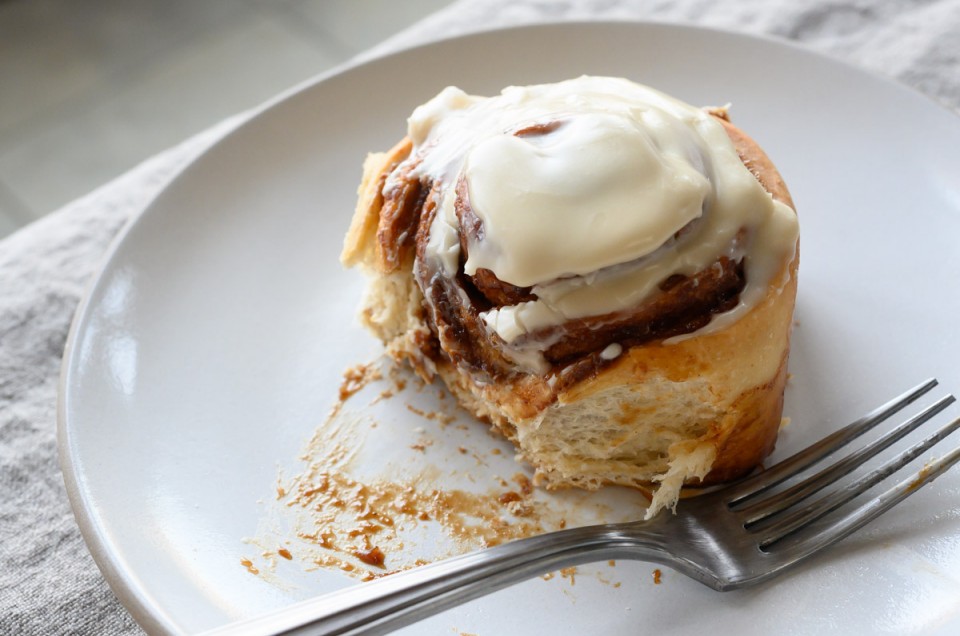


For me, wintertime never fails to conjure memories of warm spices, baked sweets, rich hot chocolate, and mornings filled with some combination of all these things. When it’s cold outside, it seems the body craves comfort, or perhaps it’s just my excuse to make another batch of Sourdough Cinnamon Buns.
This dough is no-fuss and comes together quickly, and it’s also quite flexible with its timing. You can mix and bake the buns the same day or save the dough in the refrigerator overnight and make them the next.
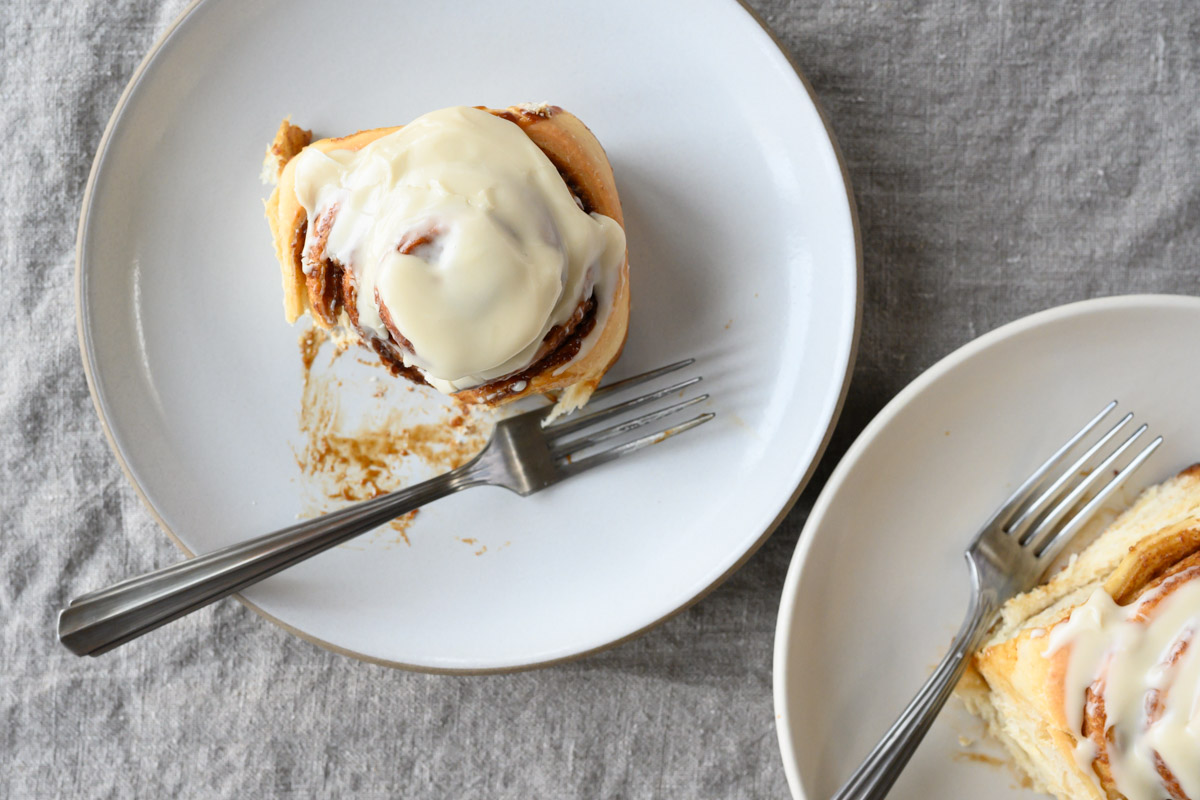
What I like about this recipe is that it takes the typical cinnamon bun to the next level by using a mature sourdough starter to leaven (and flavor) the dough. This natural leavening adds an extra depth of flavor to the famous bun, while a hint of sourness brightens all the ingredients. It adds a dash of unexpected savoriness, balancing the sweetness. These cinnamon buns are not too sweet, folks.
Let’s get started and add a new food memory to our wintertime.
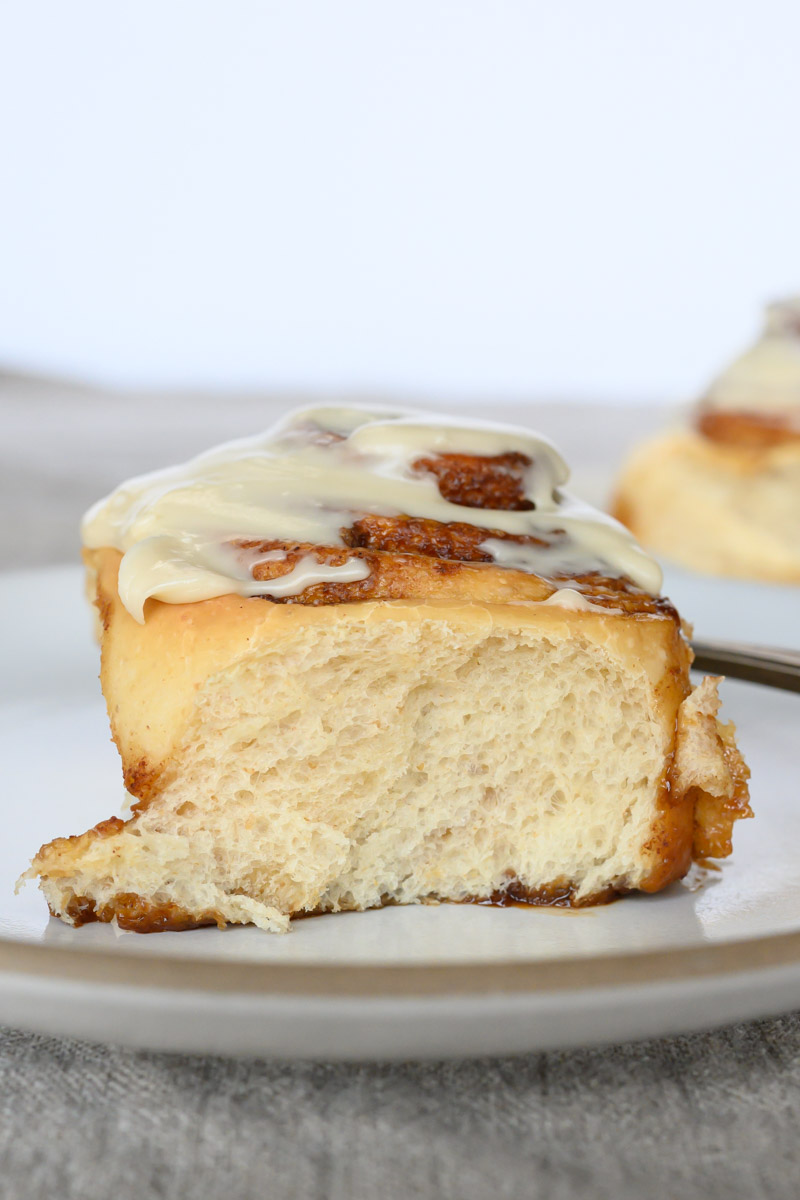
First, gather:
A note about your sourdough starter: be sure it’s been out of the fridge for at least a day or two of feedings and is vigorous. Because this is the only leavening agent in this dough, active fermentation is necessary. For more on sourdough and identifying a ripe starter, look to our Sourdough Baking Guide.
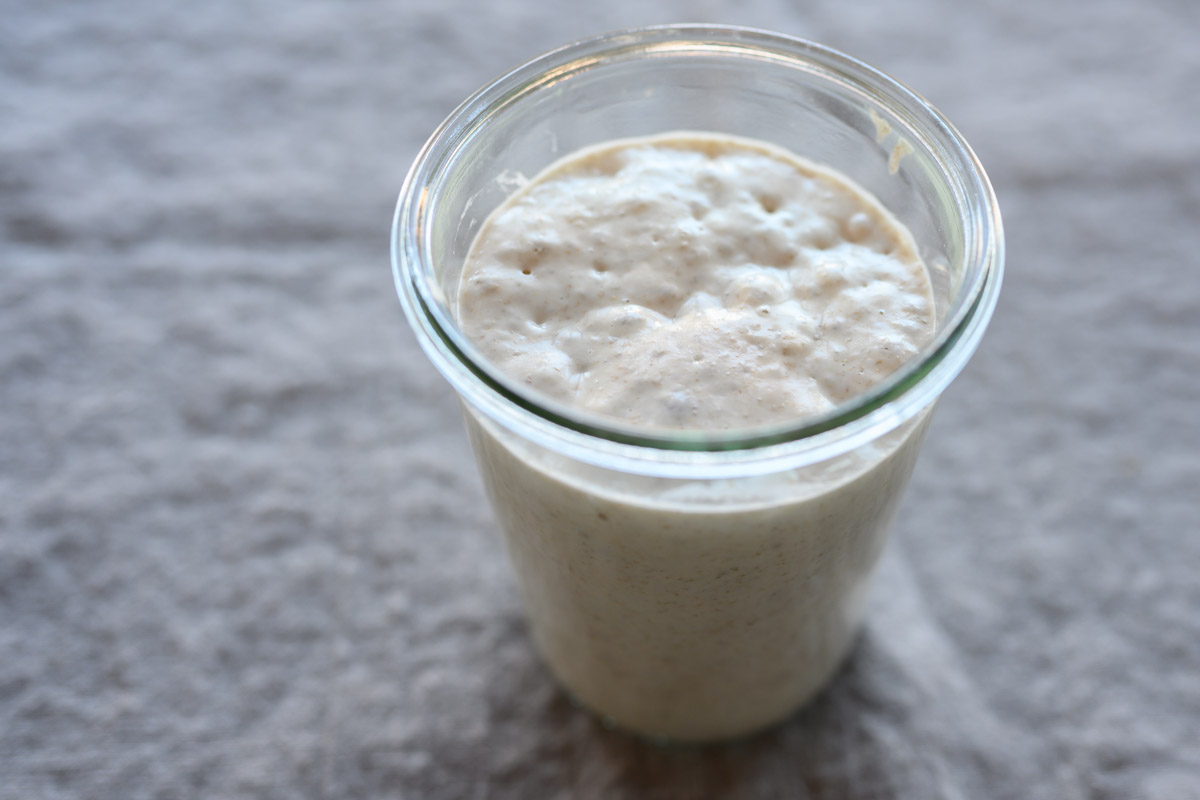
To begin, add all the ingredients except the salt to the bowl of a stand mixer fitted with a dough hook attachment. This dough benefits from a short autolyse. An autolyse will help the flour fully hydrate, the dough will become slightly more extensible, and it will reduce the overall time required for mixing.
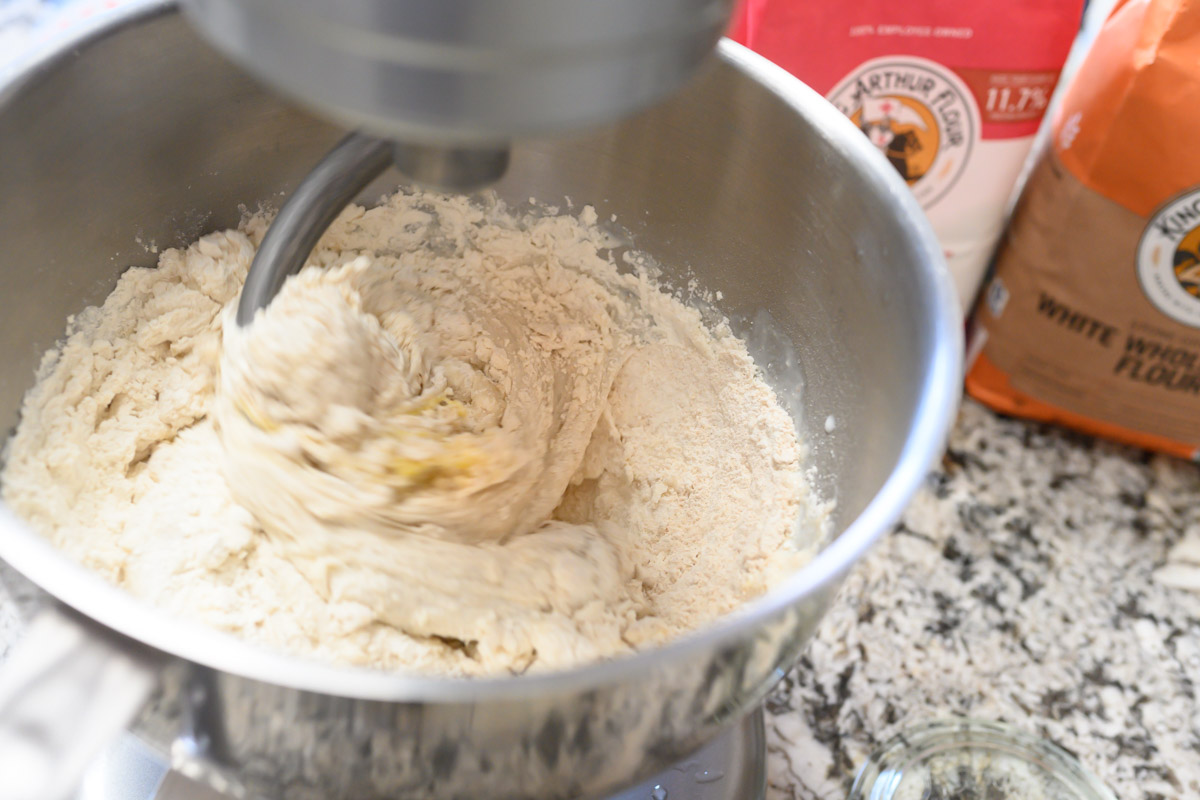
Mix all the ingredients on the slowest speed until no dry bits are remaining, 2 to 3 minutes.
Add the 1 1/2 teaspoons of salt to the top of the dough (without mixing it in) and let the dough rest in the mixer bowl for 20 minutes.
After the autolyse, mix all the ingredients until well combined, 1 minute on the lowest speed. Then, turn the mixer up one speed and strengthen the dough until it’s smooth and starts to cling to the dough hook, about 3 minutes.
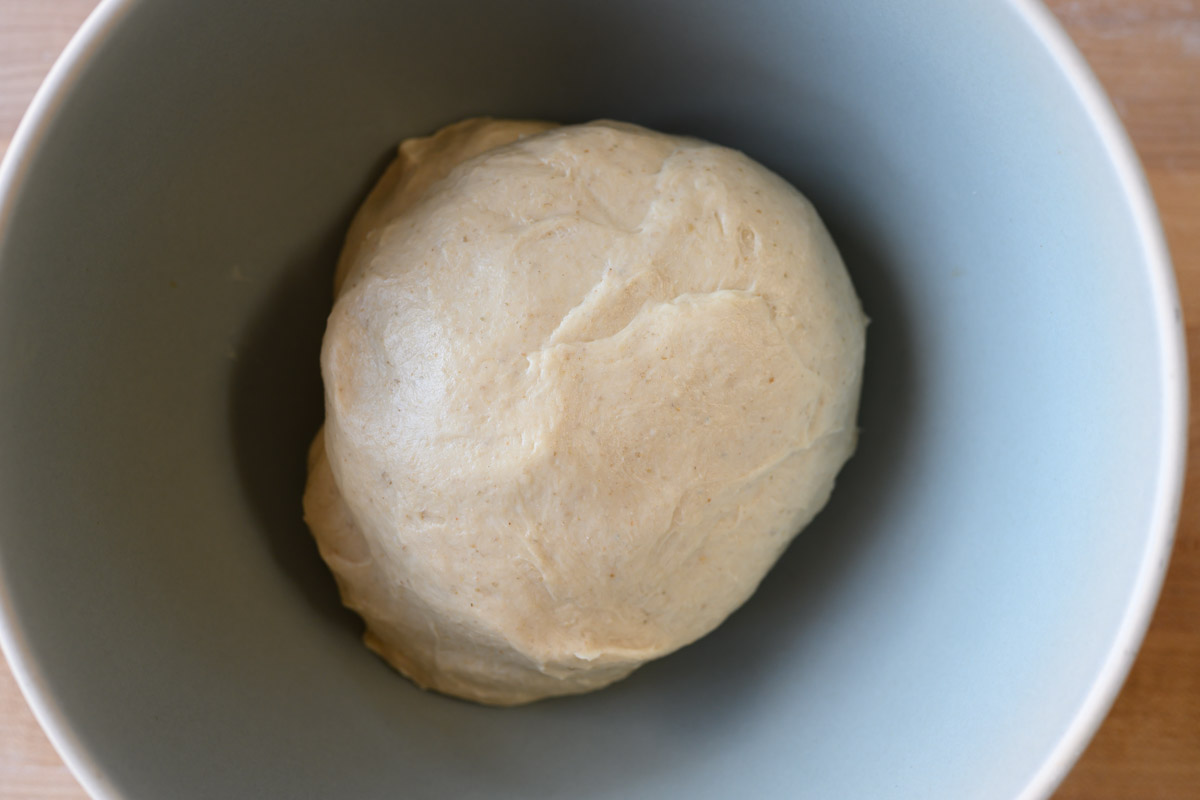
At the end of mixing, the dough will be smooth, cohesive, and elastic (stronger). It won't be adequately strengthened to pass a "windowpane" test at this point, but it should feel slightly bouncy to the touch.
If baking the same day: Cover the dough and let it rise in a warm place (75°F-78°F) for 4 hours. To strengthen the dough further, stretch and fold it in the bowl three times during this period. I like to give it a fold every hour for the first 3 hours.
If baking the next day: Cover the dough and let it rise in a warm place (75°-78°F) for 3 hours. Give it three sets of stretch and folds during this time, once every hour. After the last set, you can either shape and fill the rolls, then cover and refrigerate overnight to bake the next day. Or simply refrigerate the dough, covered, and shape, fill, and bake the rolls the next day.
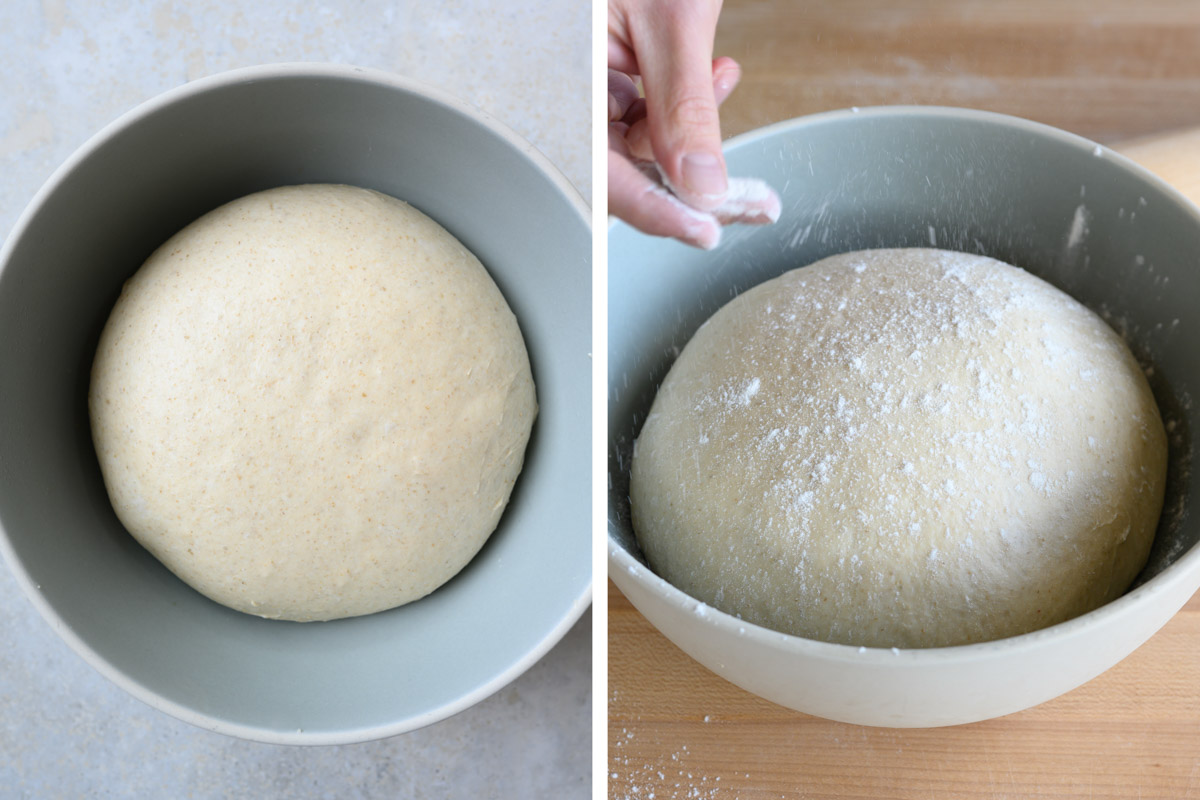
When ready to roll, the dough should be well-risen and smooth.
Before you roll out the dough, make the cinnamon filling. Gather:
Combine all the filling ingredients in a medium-sized bowl. The mixture might feel a little on the dry side, but this is a good thing: if it’s too wet, it’ll be harder to work with and may leak excessively.
Keep the filling covered until your dough is ready to roll out.
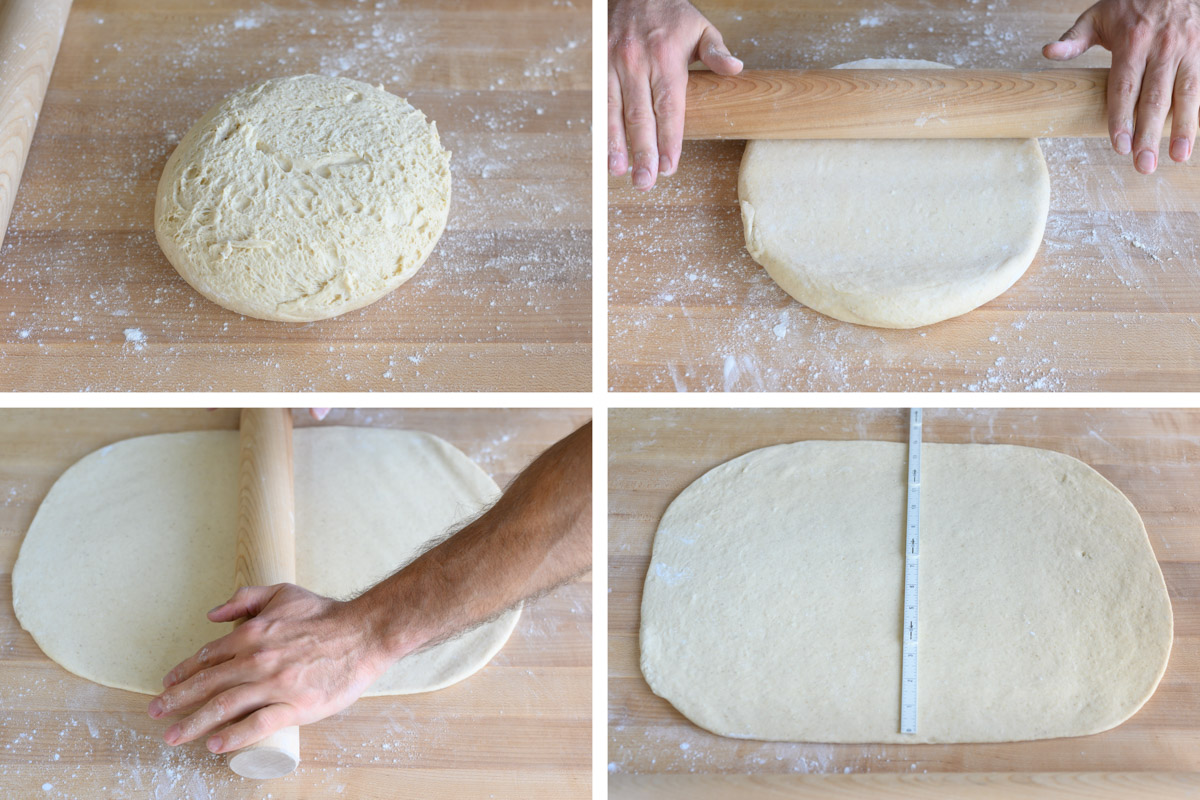
Turn out your risen dough (from the fridge or not) onto a moderately floured work surface. Flour the top of the dough and gently pat it down to deflate. Using a rolling pin, roll the dough into a 14” x 20” rectangle with short sides east and west.
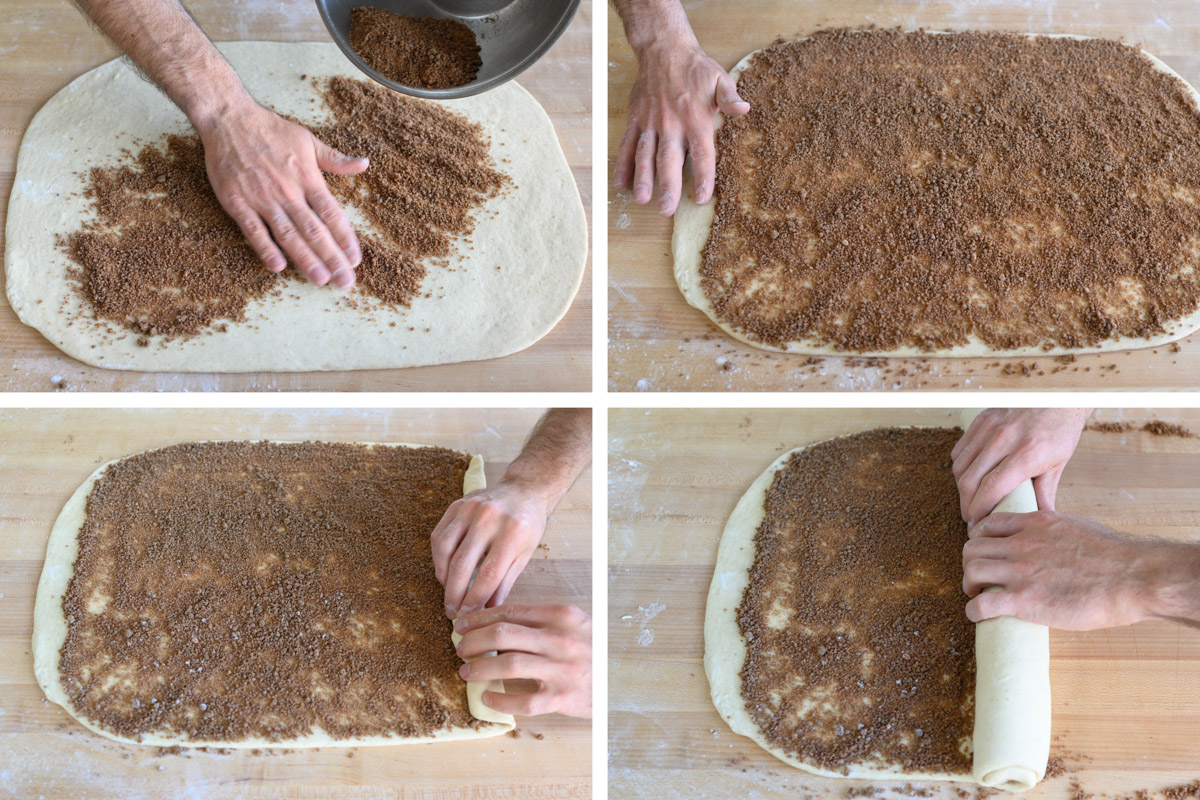
Spread the cinnamon filling evenly over the surface of the dough, leaving 1/2” of exposed dough along the left or right short edge (this will seal the cylinder shut after we roll it).
Starting with the filling-coated short edge, tightly roll the dough into a cylinder. When rolling, try to tuck the dough in and tighten it. Otherwise, when you cut it, the buns can fall apart. As you roll, the cylinder will lengthen to about 18” long (if not, you can gently stretch it to lengthen before cutting).
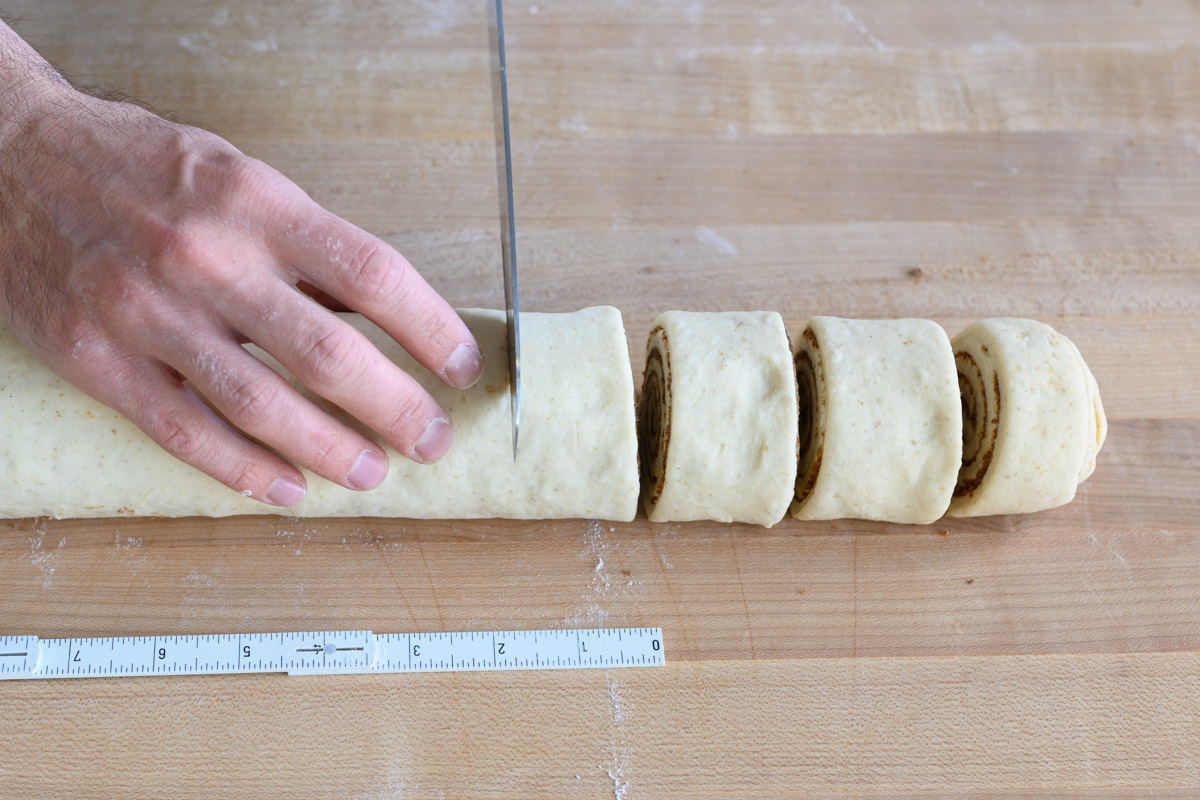
I like to use a serrated bread knife to cut the individual pieces. Surprisingly, dental floss also works quite well to cleanly cut pieces! Cut the cylinder into 12 pieces, each about 1 1/2” thick. Place the pieces, with some room in between, into a 9” x 13” rectangular pan that’s either nonstick, greased liberally, or lined with parchment paper.
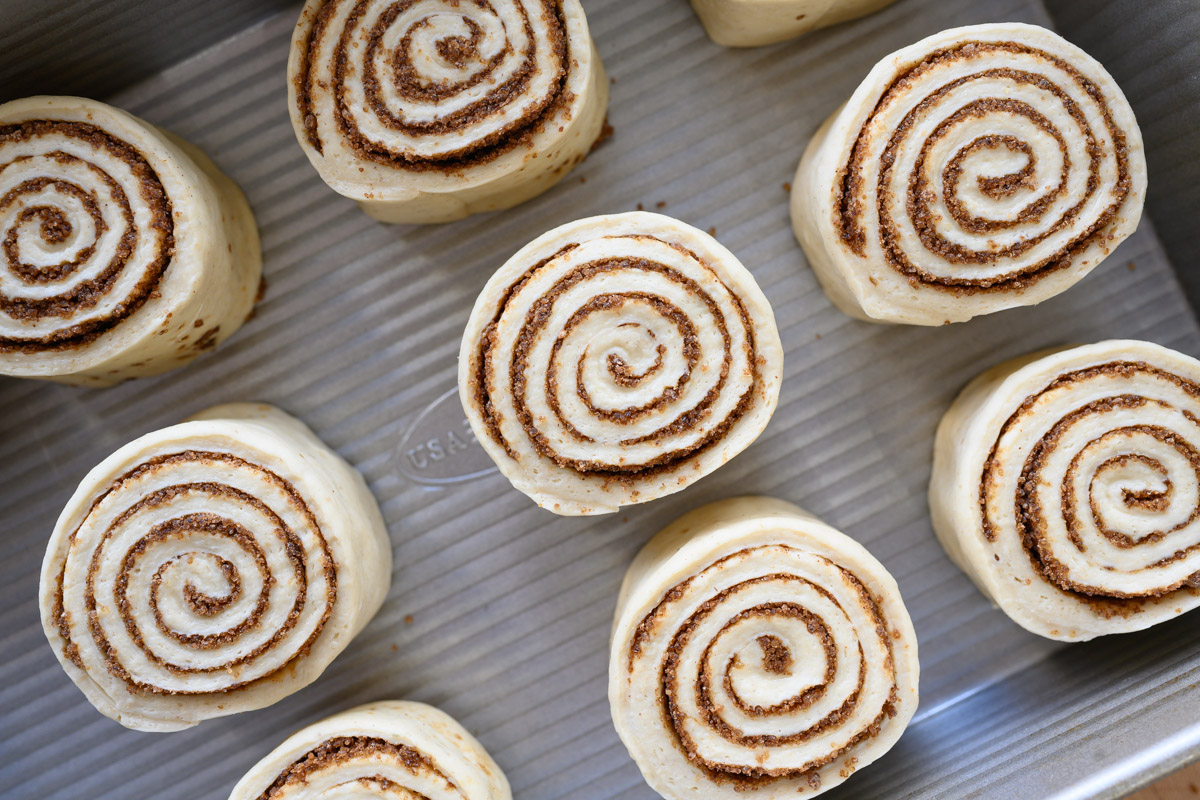
Cover the pan and let the buns rise until they've puffed up quite a bit, 2 to 4 hours at warm room temperature (75°F-78°F).
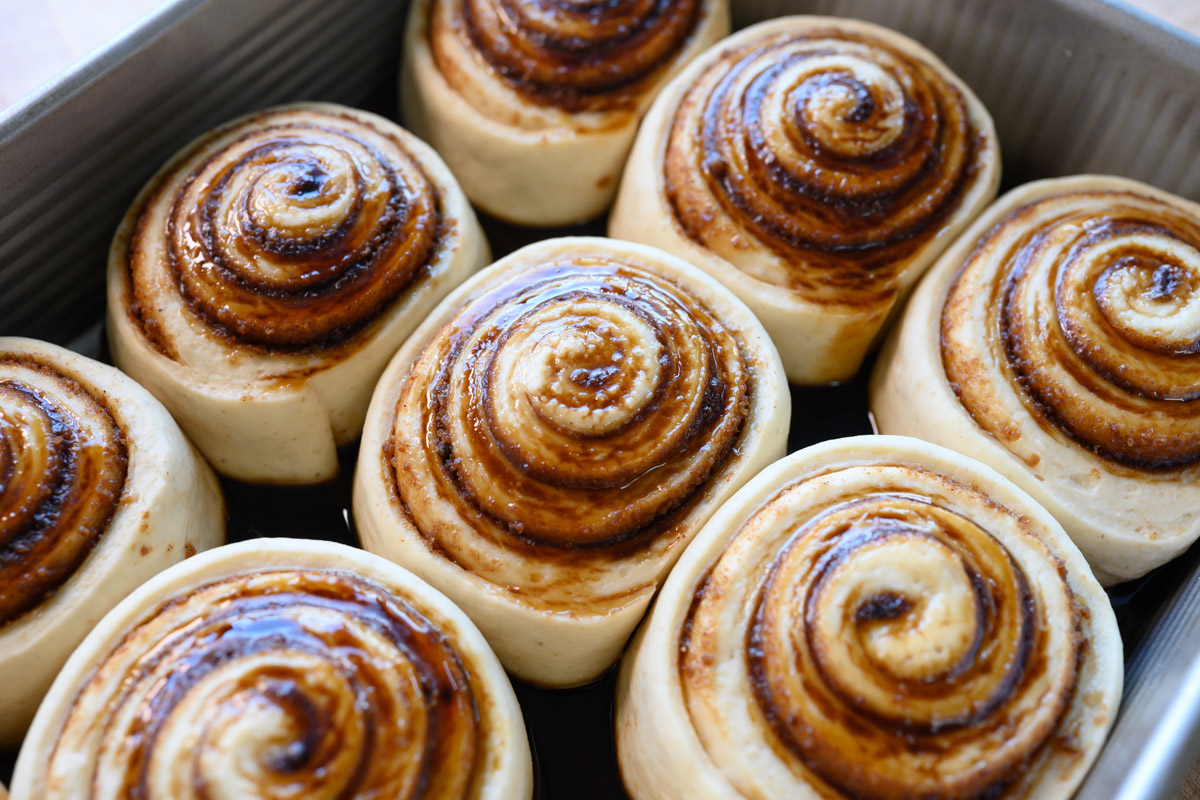
At the end of this time, you might notice the filling leaking out of the buns in the pan — don’t panic. I’ve found it’s perfectly fine if the filling oozes a little: when we bake the buns, the bottom absorbs the filling and it forms a delicious layer of caramel under each bun.
Bake the buns in a preheated 400°F oven for 18 to 22 minutes, until the tops are golden. A digital thermometer inserted into the center of a middle bun should read 190°F.
While the buns are baking, let's whip up some icing.
To make the icing, you'll need:
Note that the milk/cream added is variable depending on how thick you prefer the icing. I like it very thick and use the lower end of the called-for milk. When thick, it spreads on smooth and retains more of its structure even if topping a warm bun from the oven.
Keep the icing covered until you’re ready to use it.
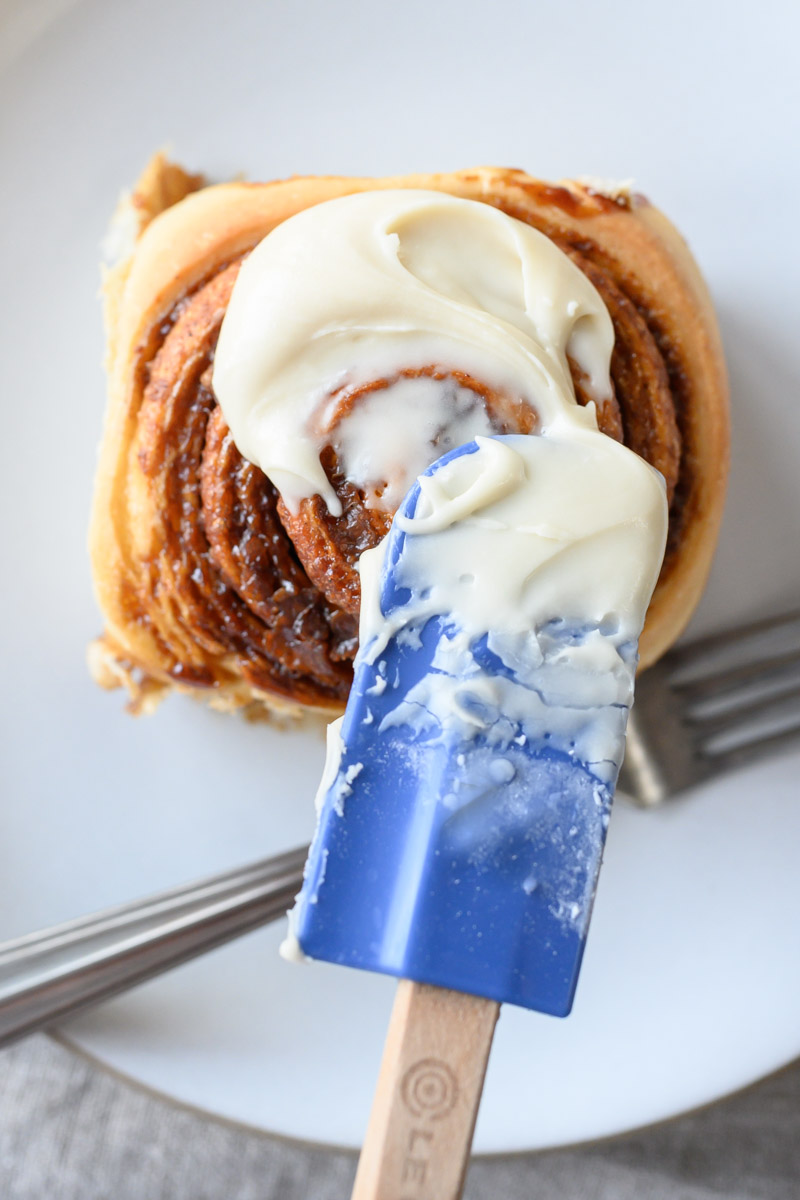
Once your sourdough cinnamon buns have cooled for 5 to 10 minutes out of the oven, lather on the icing as thick as you like. These buns are wonderful while still warm but will keep well for a day or two at room temperature. You can also freeze the buns (without icing) and reheat them later in a warm oven.
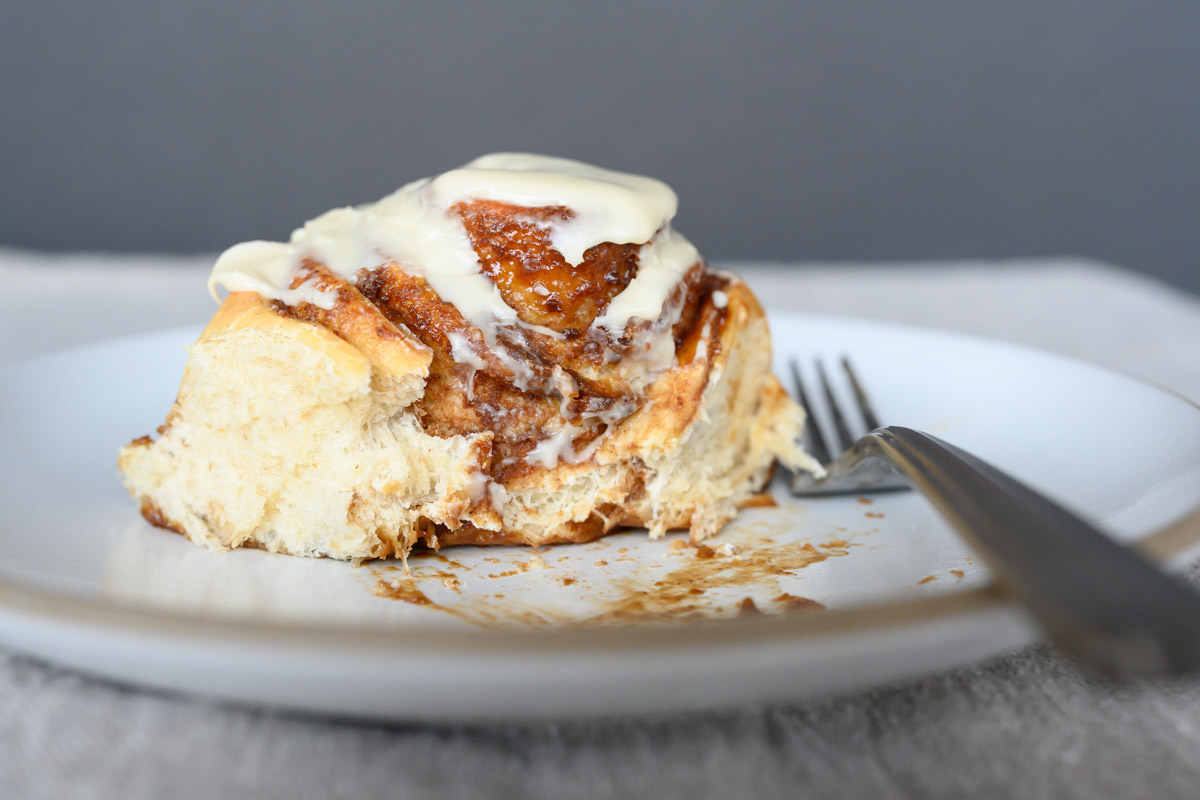
Using a starter to leaven these sourdough cinnamon buns makes a tender and sweet (but not too sweet) treat that’s sure to be added to your wintertime baking repertoire. Happy baking!
For more sourdough treats check out Sourdough: Beyond Crusty Bread.